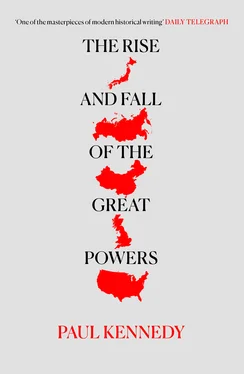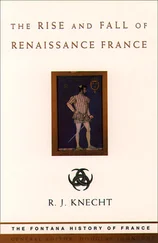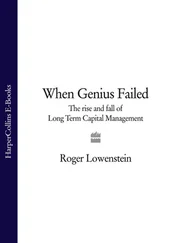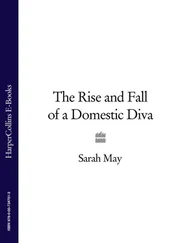Nevertheless, if one sets aside a priori theories and simply looks at the historical record of ‘the rise and fall of the Great Powers’ over the past five hundred years, it is clear that some generally valid conclusions can be drawn – while admitting all the time that there may be individual exceptions. For example, there is detectable a causal relationship between the shifts which have occurred over time in the general economic and productive balances and the position occupied by individual powers in the international system. The move in trade flows from the Mediterranean to the Atlantic and northwestern Europe from the sixteenth century onward, or the redistribution in the shares of world manufacturing output away from western Europe in the decades after 1890, are good examples here. In both cases, the economic shifts heralded the rise of new Great Powers which would one day have a decisive impact upon the military/territorial order. This is why the move in the global productive balances toward the ‘Pacific rim’ which has taken place over the past few decades cannot be of interest merely to economists alone.
Similarly, the historical record suggests that there is a very clear connection in the long run between an individual Great Power’s economic rise and fall and its growth and decline as an important military power (or world empire). This, too, is hardly surprising, since it flows from two related facts. The first is that economic resources are necessary to support a large-scale military establishment. The second is that, so far as the international system is concerned, both wealth and power are always relative and should be seen as such. Three hundred years ago, the German mercantilist writer von Hornigk observed that
whether a nation be today mighty and rich or not depends not on the abundance or security of its power and riches, but principally on whether its neighbours possess more or less of it.
In the chapters which follow, this observation will be borne out time and again. The Netherlands in the mid-eighteenth century was richer in absolute terms than a hundred years earlier, but by that stage was much less of a Great Power because neighbours like France and Britain had ‘more … of it’ (that is, more power and riches). The France of 1914 was, absolutely, more powerful than that of 1850 – but this was little consolation when France was being eclipsed by a much stronger Germany. Britain today has far greater wealth, and its armed forces possess far more powerful weapons, than in its mid-Victorian prime; that avails it little when its share of world product has shrunk from about 25 per cent to about 3 per cent. If a nation has ‘more … of it’, things are fine; if ‘less of it’, there are problems.
This does not mean, however, that a nation’s relative economic and military power will rise and fall in parallel . Most of the historical examples covered here suggest that there is a noticeable ‘lag time’ between the trajectory of a state’s relative economic strength and the trajectory of its military/territorial influence. Once again, the reason for this is not difficult to grasp. An economically expanding power – Britain in the 1860s, the United States in the 1890s, Japan today – may well prefer to become rich rather than to spend heavily on armaments. A half-century later, priorities may well have altered. The earlier economic expansion has brought with it overseas obligations (dependence upon foreign markets and raw materials, military alliances, perhaps bases and colonies). Other, rival powers are now economically expanding at a faster rate, and wish in their turn to extend their influence abroad. The world has become a more competitive place, and market shares are being eroded. Pessimistic observers talk of decline; patriotic statesmen call for ‘renewal’.
In these more troubled circumstances, the Great Power is likely to find itself spending much more on defence than it did two generations earlier, and yet still discover that the world is a less secure environment – simply because other powers have grown faster, and are becoming stronger. Imperial Spain spent much more on its army in the troubled 1630s and 1640s than it did in the 1580s, when the Castilian economy was healthier. Edwardian Britain’s defence expenditures were far greater in 1910 than they were at, say, the time of Palmerston’s death in 1865, when the British economy was relatively at its peak; but which Britons by the later date felt more secure? The same problem, it will be argued below, appears to be facing both the United States and the USSR today. Great Powers in relative decline instinctively respond by spending more on ‘security’, and thereby divert potential resources from ‘investment’ and compound their long-term dilemma.
Another general conclusion which can be drawn from the five-hundred-year record presented here is that there is a very strong correlation between the eventual outcome of the major coalition wars for European or global mastery, and the amount of productive resources mobilized by each side. This was true of the struggles waged against the Spanish-Austrian Habsburgs; one of the great eighteenth-century contests like the War of Spanish Succession, the Seven Years War, and the Napoleonic War; and of the two world wars of this century. A lengthy, grinding war eventually turns into a test of the relative capacities of each coalition. Whether one side has ‘more … of it’ or ‘less of it’ becomes increasingly significant as the struggle lengthens.
One can make these generalizations, however, without falling into the trap of crude economic determinism. Despite this book’s abiding interest in tracing the ‘larger tendencies’ in world affairs over the past five centuries, it is not arguing that economics determines every event, or is the sole reason for the success and failure of each nation. There simply is too much evidence pointing to other things: geography, military organization, national morale, the alliance system, and many other factors can all affect the relative power of the members of the states system. In the eighteenth century, for example, the United Provinces were the richest parts of Europe, and Russia the poorest – yet the Dutch fell, and the Russians rose. Individual folly (like Hitler’s) and extremely high battlefield competence (whether of the Spanish regiments in the sixteenth century or of the German infantry in this century) also go a long way to explain individual victories and defeats. What does seem incontestable, however, is that in a long-drawn-out Great Power (and usually coalition) war, victory has repeatedly gone to the side with the more flourishing productive base – or, as the Spanish captains used to say, to him who has the last escudo. Much of what follows will confirm that cynical but essentially correct judgement. And it is precisely because the power position of the leading nations has closely paralleled their relative economic position over the past five centuries that it seems worthwhile asking what the implications of today’s economic and technological trends might be for the current balance of power. This does not deny that men make their own history, but they do make it within a historical circumstance which can restrict (as well as open up) possibilities.
An early model for the present book was the 1833 essay of the famous Prussian historian Leopold von Ranke upon die grossen Mächte (‘the great powers’), in which he surveyed the ups and downs of the international power balances since the decline of Spain, and tried to show why certain countries had risen to prominence and then fallen away. Ranke concluded his essay with an analysis of his contemporary world, and what was happening in it following the defeat of the French bid for supremacy in the Napoleonic War. In examining the ‘prospects’ of each of the Great Powers, he, too, was tempted from the historian’s profession into the uncertain world of speculating upon the future.
Читать дальше












